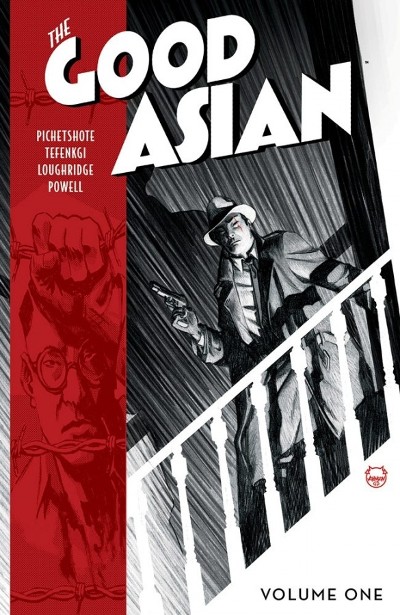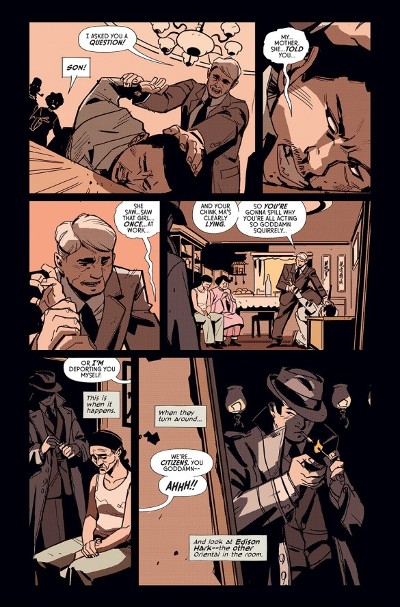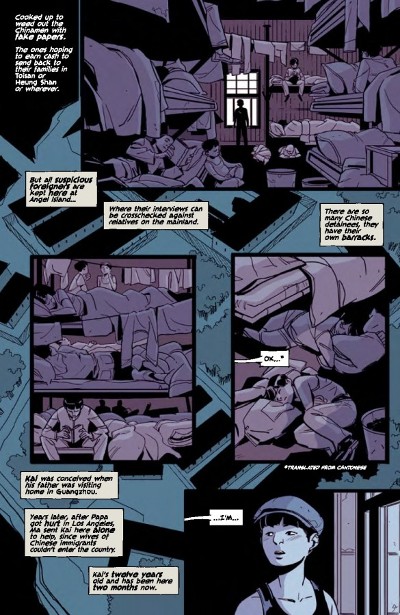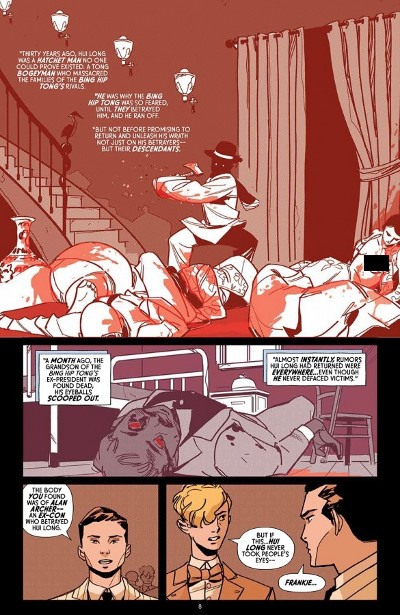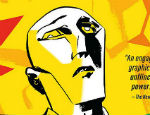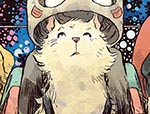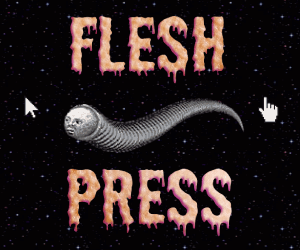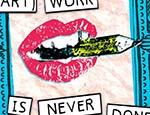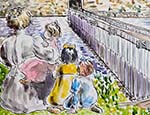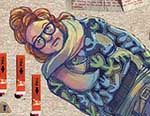Noir, as a genre, often trades in stereotypes even as it breaks them down. Femme Fatales, for instance, have more agency than earlier female roles, but were also always duplicitous and condemned for it. Meanwhile other races, when featured at all, didn’t fare much better, particularly “Yellow Peril” villains. On the flip side there were a number of Asian “heroes” – like Charlie Chan or Mr. Moto – albeit always played by white actors in yellowface. Heck, one of the most famous film neo-noirs is called Chinatown, but only because the area represents lawlessness and moral confusion within the film.
It’s this uncomfortable history that Pornsak Pichetshote places The Good Asian inside of. Eddie Hark is not played (or written by) a white man, yet he still feels a pull on his identity, being raised by the (supposedly) philanthropic white millionaire Mason Carroway. Eddie’s keen eye for detail had him working as a detective in Honolulu, but when Carroway suffers a heart attack over his missing (Asian) maid, Ivy, Eddie is pulled back to San Francisco and quickly embroiled in mysterious murders and rumoured gang violence popping up in the bustling Chinatown. Eddie must root out what’s really going on, whilst also navigating the racist police force that he’s become embedded with, telling one supporting player “It feels like every choice I have – means betraying someone.”
Alexandre Tefenkgi renders this seemingly binary lose-lose world in lovely noir shadows, giving a deceptively simple touch to the clean linework. Yet within these smooth inks is real detail of both the Chinatown streets and individual characters, who are given enough features to always be memorable and leave a lasting impression. Tefenkgi – alongside veteran colourist Lee Loughridge – also shines when the composition gets more broken up, fragmented through flashes of memory or even Eddie’s distracted lust for “gweilos” (white women), a more carnal form of this subconscious desire for white assimilation. Even if Eddie knows it’s a false and dangerous dream.
It’s tough to fully assess The Good Asian, given Vol. 1 ends just as the main mystery begins to deepen. So far, we can only look at how the pieces of the puzzle are assembled instead of the whole. And sometimes the way it’s laid out can be jumbled, the pacing leaving clues dormant for long stretches and losing focus of what the objective even is. The Good Asian falls into conspiracy theories around Chinatown’s development and the Bing Hip Tong gang, but although such detours are par for the course with noirs, it feels only superficially linked to the missing maid Ivy.
If the world outside of Eddie Hark’s head feels somewhat underdeveloped – including his relationship with his foster brother Freddie – this might be because the world inside is so rich. Eddie fits amongst the ranks of classic conflicted detectives, begrudgingly operating in a corrupt environment while surveying the damaging that gets done along the way. Eddie is torn between the aspirations of the American Dream and its disappointing reality, working within the system as a “model citizen” (which gets him exemptions from immigrant detention camps) while knowing that can be its own prison.
From this historical perspective, Pichetshote and the creative team shine a light on 1930s Asian-American reality – from the Chinese Exclusion Act and the “Chop Suey Circuit” in Chinatown – without feeling preachy, but as a vital aspect of everyday reality. The Good Asian is only just getting started, but so far it offers a compelling and fresh perspective of American noir that should intrigue fans of the genre, while also breaking down the stereotypes that can be found within them.
Pornsak Pichetshote (W), Alexandre Tefenkgi (A), Lee Loughridge (C), Jeff Powell (L/D), Dave Johnson (CA), Grant Din (Historical Consultant) • Image Comics, $14.99
Read the first issue of The Good Asian online here courtesy of Image Comics
Review by Bruno Savill de Jong





